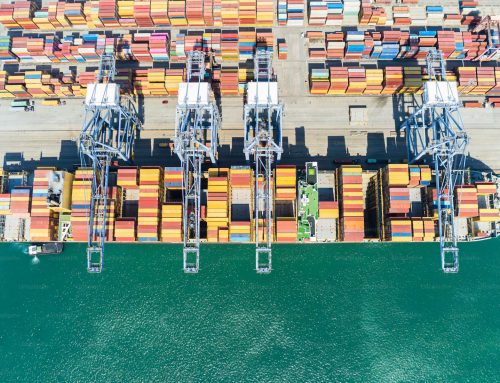Humanitarian response is currently hampered by a lack of real time, accurate data and information on needs with regards to the number of affected communities, areas prone to disaster, and aid supplies stored at the different points with different agents along the supply chain. This phenomenon is mostly escalated with lack of visibility and accessibility to the required data, information and goods in event of a disaster. According to previous report by Hamideh in ArcticStrartup, about the 30% of aid supplies does not reach to the correct destinations due to corruption and lack of supply chain visibility on data, information and available aid supplies. Therefore, agents operating in the network of humanitarian response lack a complete picture of where the aid supplies are stored, what data are available and how to get the necessary data, who are the players and to whom coordinate with.
Climate change, population growth, urbanization and number of disasters including earthquake, flood, sandstorms, accidents, droughts are occurring with an increasing trend around the world. The most vulnerable ones are developing countries, like Iran and Syria with less improvement on their capacity and learning lessons from the pasts. The obvious examples are the Plasco collapse, Kermanshah earthquake, Sanchi explosion, just happened within a year with a significant number of casualties in the region, while there were chances of providing rapid delivery with less casualties. Number of factors interfere to not have an effective response, while lack of decentralized data management system to be shared among the involved actors can be one factor to impede such efforts.
Globalization, technological development and the changing roles of individuals in our society begs entirely for the really new tools and capabilities to help humanitarian actors to make better decisions under uncertain and very bureaucratic environments. Recent technological advancements such as cloud computing, machine learning, data analytics, and blockchain have all contributed to mitigate the information sharing challenges to provide assistance to humanitarian actors making decisions based on real-data-driven solutions. But the question is until when the developing countries are willing and able to adapt and implement such technological advancements.
WFP has taken step forward on piloting and executing the blockchain since 2017. Instead of transferring resources to a financial intermediary, who would create accounts for the refugees and allocate their funds in each shop, the WFP registers the funds allocated to each individual on a blockchain. With that, the person can then go to a regional market, get their iris scanned and get what is entitled to them, eliminating the intermediaries and greatly reducing the space for corruption. The costs associated with the financial management of the operations, in this case, were reduce up to 98% (ArcticSartup report, 2017).
According to Frontier Technology Livestreaming (FTL), a blockchain system involves distributed ownership of information. In such distributed ledger network no person or organisation owns the information. All nodes in the network possess the same data and the open source databases can be shared, updated real time among the involved actors. It is this characteristic of decentralization which helps solve the problem of data being locked up in different places, as all the data in a given system is automatically shared and also reduces the vulnerability of the system as there is no single point of failure.
Anyhow, a lot of merits and demerits of using such technology exist and need further exploration to determine their affordability by humanitarian organizations, usefulness, cost efficiency, accountability, and flexibility. Ye, trust probably can be one key mediating factor to succeed. In one country, the affected communities may not trust to their government, their focal Red Crescent Society, banking system and Military, while they do trust the local citizens, local NGOs, volunteers, Sport players and even Celebrities. Then, the open source shared data among the local communities can be one key factor for improvement to rapid response delivery. Celebrity Supply Chain were developed during the 2017 Kermanshah earthquake trough that the aid supplies delivered from the mostly capital zone to the affected communities during the response. Though the mission failed due to creation of large amount of fake personal bank accounts under the celebrities’ names, this can be one possible option which demands for full considerations in the future. Beside trust, factors such as security, emotional, cultural and behavioral issues, and capacity for developing countries need to be addressed carefully.
To contact Amin: maghsoudi.amin@gmail.com




